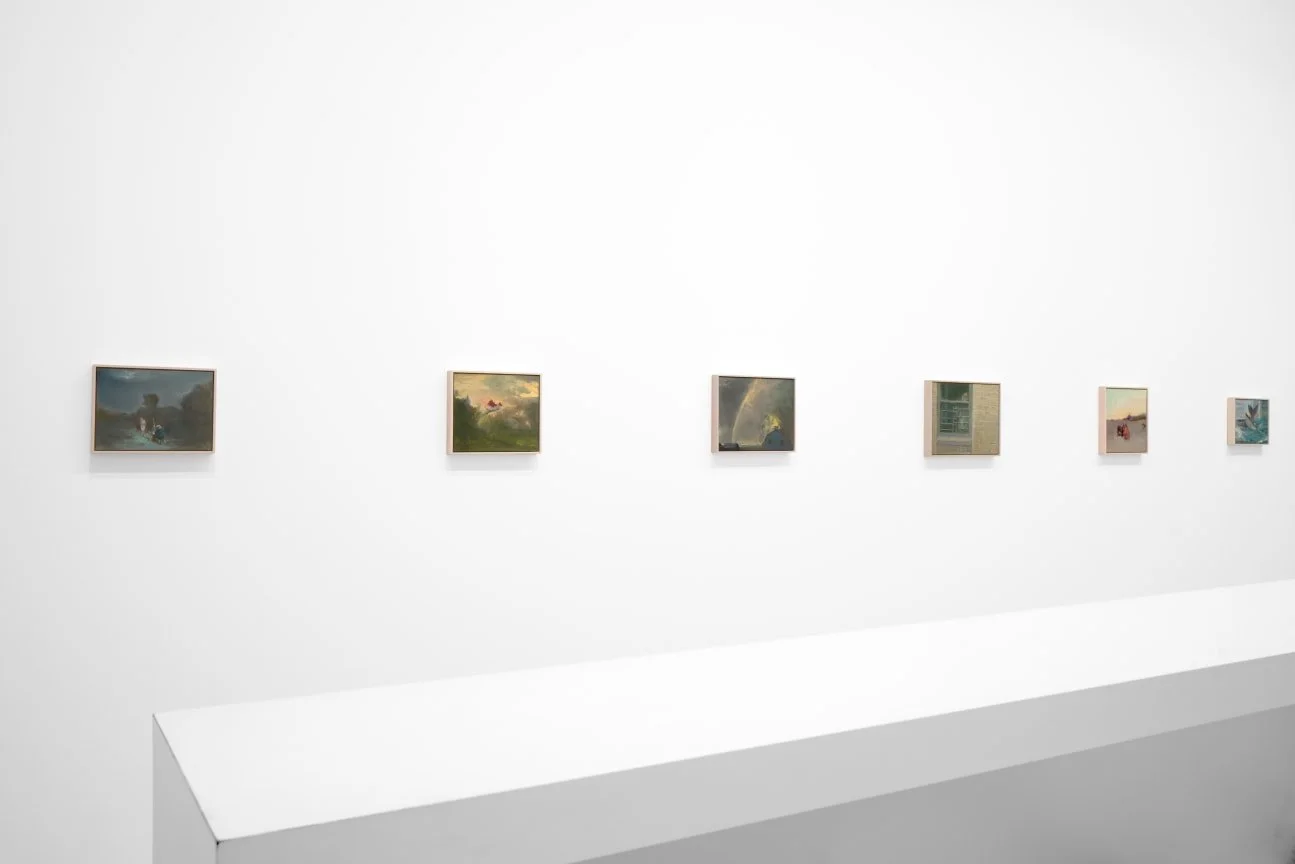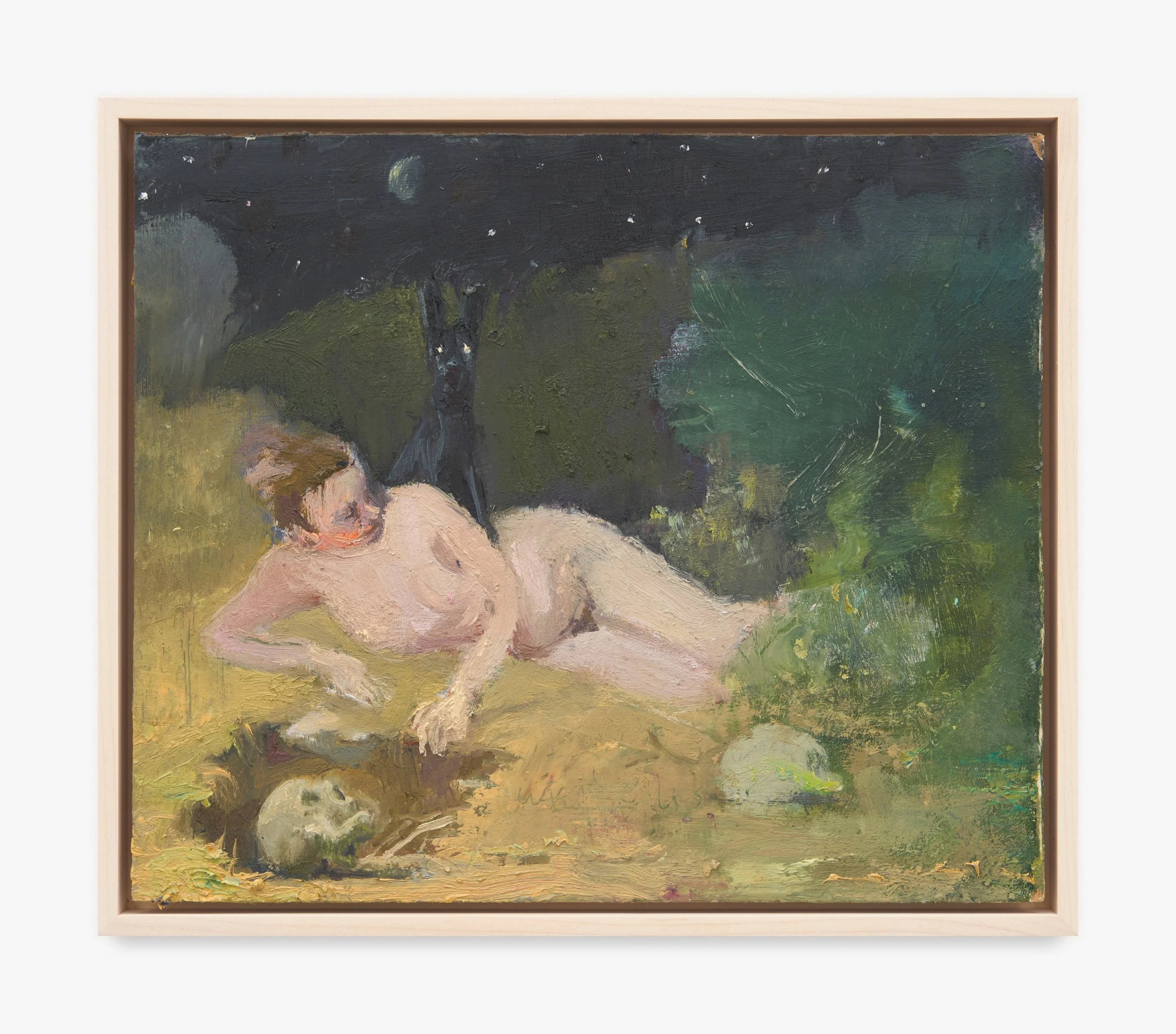SETH BECKER: A BOY’S HEAD
Venus Over Manhattan announces A Boy’s Head, an exhibition by Seth Becker. The presentation marks the artist’s debut solo exhibition in New York, and the gallery’s inaugural solo presentation of his work.
February 10 – May 12, 2024
Miroslav Holub’s poem catalogues a rich collection of images in a young mind and extols the sense of wonder that their diversity evokes. Echoing this feeling, Seth Becker’s exhibition assembles some twenty-five paintings that feature a similarly broad range of subjects, with figures, animals, and landscapes depicted in both real and imagined contexts. The variety of his subjects reflects the diversity of his creative approaches, which include transforming existing imagery, engaging in traditional observation, and conjuring wholly imagined situations.
In their willingness to pursue an unrestrained imagination, Becker’s works mount a quiet argument on behalf of wonder. This point is quietly echoed in The Horse that Spells, which depicts a horse named “Lady Wonder,” famous for her purported psychic abilities and capacity to communicate. Becker’s paintings work to recapture the sense of mystery and joy found in the exploration of the strange and inexplicable, embodying the delight of encountering the strange, the old, and the unknown.
The exhibition also includes several works that address the same subject in different scenarios. For instance, Antoine’s Tiger is one of two works that depict a tiger, and two paintings feature images of Batman. Other works are linked by recurring motifs, as seen in a set of three paintings that initially appear unconnected. In Acrobat, a figure clad in a Tiffany blue dress contorts herself into an enchanting pose, spot lit as if for a performance. This figure reappears in The Acrobat Reveals Her Birthmark in the Shape of a Rabbit, where a view of her back reveals a unique birthmark in the shape of a leaping hare.
Becker’s paintings engage with various forms of image making. An avid collector of “real photo postcards”—a type of vintage postcard that reproduces vernacular and often unexpected snapshot photography on postcard stock—Becker’s collecting habits often bleed into his painting practice, and these images occasionally provide the architecture for his compositions. In some instances, Becker directly references works by other artists, as in Watteau’s Skull, where the main figure echoes the odalisque from Jean-Antoine Watteau’s Reclining Figure (c. 1713-1717), a small painting held by the Norton Simon Museum in Pasadena.
More frequently, Becker explores the theme of artistic production by depicting artists at work. Painting by Moonlight portrays an artist painting a model under the eerie light of the moon, while Poet at Work shows a poet at his typewriter, apparently unaware of the fox standing nearby, jaws agape. Both works reinterpret the genre of the “studio painting,” transforming the site of creative production into a realm where the boundary between reality and imagination no longer obtains.
These otherworldly settings cast the artist as a creator of worlds, wherein a poet may conjure a fox into his study, or the moonlight might illuminate a painter’s subject. Taken together, Becker’s paintings fuse reality and fantasy to evoke a feeling of youthful enchantment, where the boundary between the real and the imagined is fluid and permeable.


